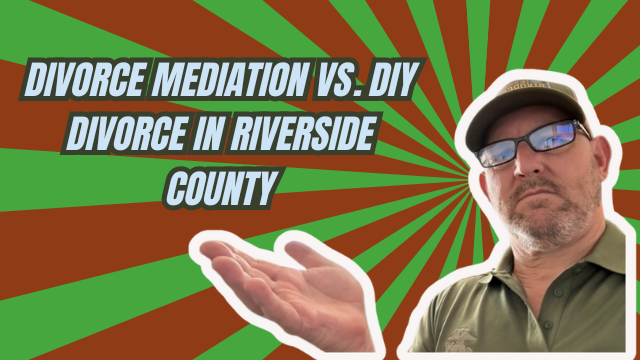How to Modify Your Divorce Agreement in Riverside County
I’m Tim Blankenship from Divorce661. Life changes — jobs, finances, and parenting arrangements — and sometimes your divorce agreement needs to change with it. In this article I’ll walk you through how to modify your divorce agreement in Riverside County, explain the two main paths you can take, and share a real client example that shows how quickly a modification can happen when both parties cooperate.
Why you might need to modify your divorce agreement
Divorce agreements aren’t meant to be one-size-fits-all forever. Common reasons to seek a modification include:
- Change in income or employment (e.g., loss of a job)
- Changes in spousal support needs or ability to pay
- Changes in child custody, visitation, or the child’s needs
- Relocation or significant life events that affect the original terms
When your legal arrangements no longer reflect your reality, updating the agreement protects both parties and the children involved.
Two ways to modify your agreement: Stipulation vs. Request for Order (RFO)
There are two primary routes to change an existing agreement: a stipulated modification when both parties agree, and a contested modification through a Request for Order when they don’t.
Stipulated modification (when both parties agree)
If both you and the other party agree to new terms, a stipulated modification is the fastest, simplest route. A stipulation is a written agreement that replaces or amends the prior terms and is filed with the court.
Why choose a stipulated modification?
- Quick and efficient — no court hearing required in most cases
- Less stressful and less expensive than litigation
- Preserves control: you and the other party decide the terms
Typical steps to complete a stipulated modification:
- Negotiate new terms with the other party.
- Draft a written stipulation that clearly states the changes.
- Both parties sign the stipulation.
- File the stipulation with the Riverside County court for approval.
- Obtain the court’s file-stamped order or judgment reflecting the new terms.
Request for Order (RFO) — when you can’t agree
If the other party won’t agree to the changes, you file a Request for Order (RFO). This is a formal court process that asks a judge to change the terms of your judgment or order.
Key things to know about the RFO process:
- You must complete and file the required paperwork with the court.
- The other party must be served with notice of the RFO.
- A hearing may be scheduled where both sides present evidence and arguments.
- The judge will issue a ruling based on the evidence and applicable law.
While RFOs are more complex and take longer than stipulated modifications, they’re necessary when consensus isn’t possible.
Real client example: Fast spousal support reduction in Riverside
Here’s a real example from our practice in Riverside County. One client lost his job and needed to lower spousal support. Because his ex agreed to the change, we drafted a stipulation, filed it with the court, and received approval in two weeks — with no court appearance required. That’s the efficiency a stipulated modification can provide when both parties cooperate.
How Divorce661 helps
At Divorce661 we handle both stipulated and contested modifications in Riverside County. Our services are designed to be straightforward and stress-free:
- Flat-fee modifications — no hourly billing surprises
- We prepare stipulations and represent clients in RFO matters
- 100% remote service available within Riverside County
- Fast, court-compliant filings to get changes finalized efficiently
If you want help starting a modification, visit Divorce661.com to schedule a free consultation and we’ll guide you through the process.
Quick checklist to get started
- Identify what needs to change (support, custody, visitation, etc.).
- Talk to the other party to see if you can reach an agreement.
- If you agree, draft a written stipulation and get signatures.
- If you don’t agree, prepare and file a Request for Order (RFO).
- Serve the other party with the paperwork and be ready for a hearing if required.
- File the final signed/stamped documents with the court to make the modification official.
Conclusion — keep your agreement aligned with your life
Life is unpredictable, but your legal arrangements don’t have to stay out of sync with your circumstances. Whether you can agree with your ex and use a stipulated modification, or you need to go through an RFO, there are clear steps to update your divorce agreement in Riverside County. If you need help, Divorce661 is here to make the process accurate, efficient, and as stress-free as possible.
For a free consultation or to learn more about flat-fee modifications, visit Divorce661.com.










